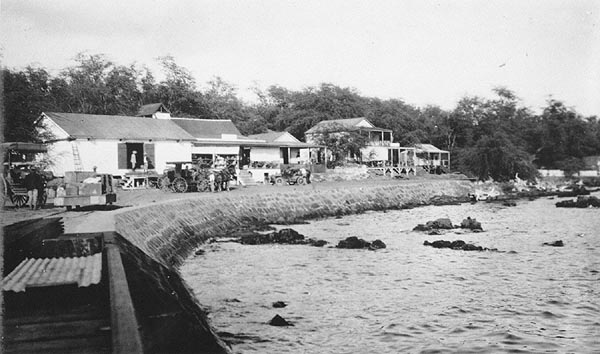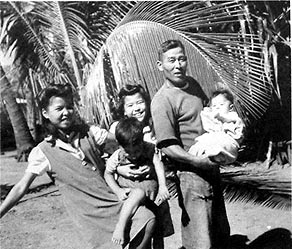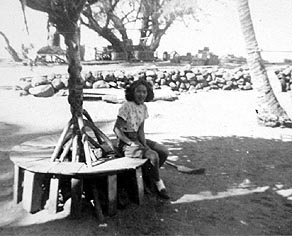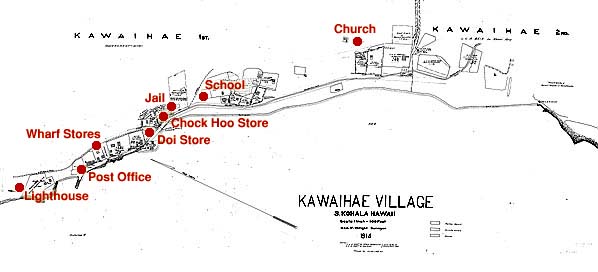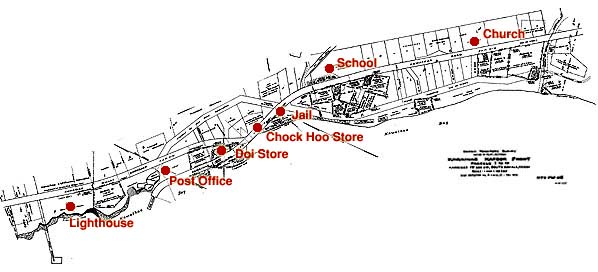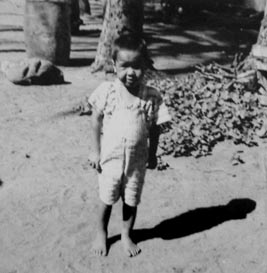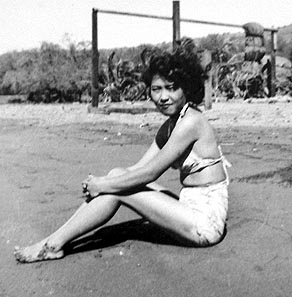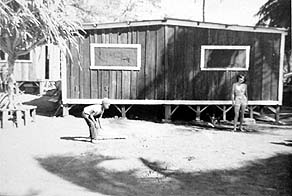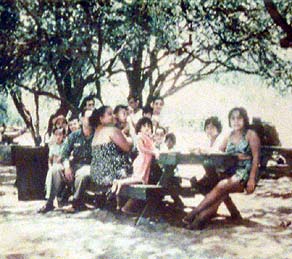 |
 |
 |
|||||
|
|
|||||||
|
|
|||||||
| |
|
|
“It was like we knew everybody,” ‘Ilima says of the old village. “Filipino family next door, Japanese family on one side, and it was really family. We were really knit—everybody helped everybody, and when we had a hukilau, everybody came and shared the fish. You bring your own bucket or pakini [tin pan] or whatever, and you just took what you needed, which is how it was. We just never took more than we needed. What we could eat, this is what we took, because there was no electricity so no refrigeration. So we would have dried fish, would have fried fish, would have salt fish."
|
||
|
|
||
“Where I was raised in Kawaihae,” Pua recounts, “we had the Nagasawas, which is Ku‘ulei’s family. We had the Jack Polo, which is the La‘au fish market is here, his grandfather. We had the Terigono Japanese family—they lived right in the back of us. Then we had Bill Akau’s grandfather, Ka‘ula‘ilimoku, Simpson Ka‘ula. And there was a Solomon Akau. They had a Dela Cruz family. And then we had a family that was a builder and that was Matsumoto, down below on the makai side of where the Minute Stop store is now. "Kealanahele, was just before the church. And we had this guy
called Tutu Oliver, he was a La‘au. We had this guy called Tutu
Mahea, he lived there. The Hui family. And then my neighbor over here,
my cousin, the family was Solomon Akau. We had a lot of Filipinos. We
had like Ernest Pilonio, we had one called Big Maning, Small Maning,
Coconut Willy. We had a lot of people that lived down here"
|
|
|
“Some people had government jobs,” Lala points out: “the Akaus at the Post Office, like that; the sheriff, school teacher, government jobs. "We had all these plantation workers, Filipinos, they lived here. They were living over here too, in the shacks there. They quit the plantations, and came down here to fish. “My uncle Oliver La‘au used to be the one to take care of the light house, and Spencer Park. The whole park. They had one house over there where they made the circle. The house is still there.”
|
| |
|
|
Sites of Kawaihae Village:
|
|||
|
|
|||
“I remember my Mom was going to have a baby,” Lani recalls, “and they didn’t have doctors then, in Waimea. It was just starting to grow. But there was a Hawaiian lady that lived way on the beach and I had to send this man, ‘Go get that lady over there, bring her over here, I think my Mom’s going to have the baby.’ "He goes over there, he brings this lady here and my mother gave birth in our own house. That woman delivered the baby. There’s no doctors there. I never even heard of a doctor delivering a baby in Kawaihae. It was done by this woman. She would come to your house and deliver the baby. She was about in her middle years, either 40s or 50s. And she would deliver the baby. I have no idea how she learned how to do that. "And you don’t give them nothing, they don’t want anything. Hawaiians don’t want money. They don’t want you to pay. That was their job.”
|
|
|
“I remember the Mango farm,” says ‘Ilima, "and people would come by to buy mangos and my Mom would sell mangos and make a little cash, to buy things other than food. So it was a very simple life. “I had only one brother and I remember he would set traps for doves, and he would catch a bunch of doves. And he would make a little imu and he would kalua these little doves, and this is what we would have for dinner. So we kind of lived off the land. “And of course our clothing were all hand-me-downs from this cousin, to this cousin, to this cousin, to that cousin. It was all hand me downs. Of course, we never wore shoes. There was no need to."
|
|
|
|
“Those days, because we didn’t know any better, we thought that we were wealthy, because we had what we needed. And then as we got older and we got married and we realized wow, we never knew we were missing out on a lot things because we never had them. "And I believe that’s why life was so good. Because we never wanted for anything—we always had fish, and our leisure time was spent in swimming and just playing on the sand and catching crabs. You don’t do that anymore. And families were always together. We always ate together, prayed together. "And this is something we very seldom do, I mean even in our house. You know, the kids want to eat one kind of food and my husband and I are usually eating the leftovers.”
|
||
|
|
||
“There was a one room school house. I didn’t go there, but my sisters did though. They did. It was just local kids, so they kind of spoke half Hawaiian, half English. I’m not sure if the Board of Education was happy about that." "My grandfather spoke in Hawaiian, pretty much all the time," Mel states. "He was really, really conversant, but he spoke English also. And he could write well; he read a lot. So I grew up kind of bi-lingual. And I think if he were still living, I would have been able to talk. "See, with language, you got to get somebody to converse with, otherwise you are fumbling and thinking for words, what you’re going say."
|
|
|
"I used to hula when I was a young girl," Lani says. "The teacher, her name was Mrs. Kulani. She taught me how to hula. A lot of girls would hula. It wasn’t part of the school, but they came to the school to teach us. And then when it was May Day, they would take us to go to do the hula for May Day, at the school. They would pick up the ones that knew how to do the hula. "But my Mom used to go crabbing every morning. Every morning she’d go crabbing right in front of our house you know, and when the tide is low she would go catch crabs every morning. And we would go to school, we walk right across and go to school, come home for lunch. She had all the crabs all cleaned and fried for us to eat lunch, with poi."
|
|
|
|
"We hardly ever ate rice before. The only time we ate rice, our next door neighbor was Japanese and we’d go there and try to eat rice. But it didn’t taste as good as the poi that we ate at our house. Since my grandfather used to work for the ranch too, every week they would bring poi—in a bag and wrapped in ti leaves—and drop it on our stone wall. We had free poi every week. Every Wednesday, I remember we had free poi. "I told my kids that story, and they said, ‘what a life you had.’ I said ‘I enjoyed my life. It was good.’”
|
||
|
|
||
The first wave of change came to the old village with the arrival of World War II.
|
||
|
|
||
|
|
|
|
|
|

|
| Kawaihae Home | Map Library | Site Map | Hawaiian Islands Home | Pacific Worlds Home |
|
|
|
|
|
|
|||
| Copyright 2006 Pacific Worlds & Associates • Usage Policy • Webmaster |
|||
